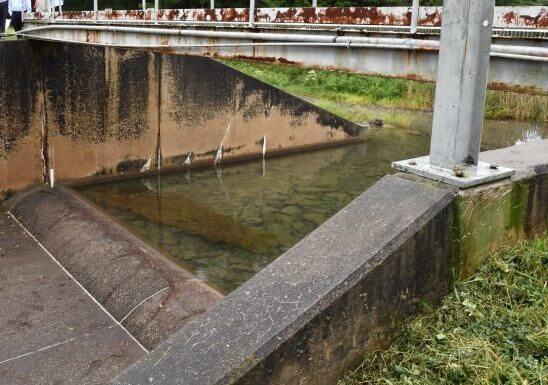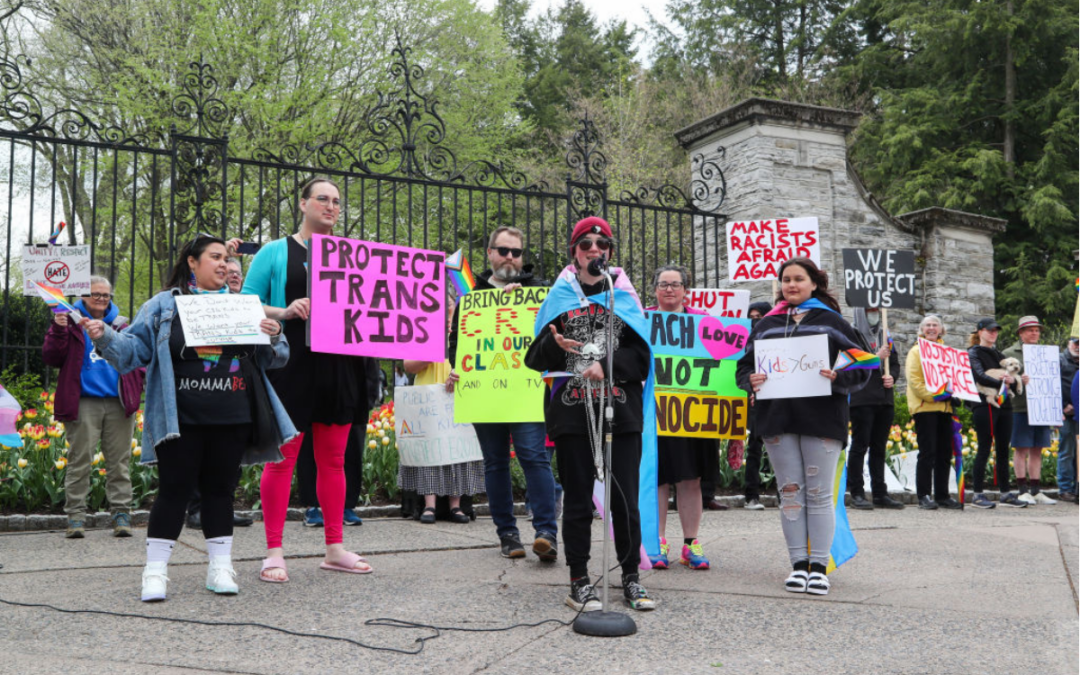
The Heller Dam in Lycoming County, seen in this September 2019 file photo, is almost 50 years old and is deemed a high hazard dam. It stores drinking water for over 50,000 people and more than 2,600 residents would be at risk if it ever failed. (Mark Nance/Sun-Gazette via AP)
Works Progress Administration-era structures are susceptible to more extreme weather as a nation debates what to invest in itself.
Pennsylvania has almost 3,400 reasons to make a serious investment in infrastructure, but most people don’t even think about them until something goes wrong.
The PA Department of Environmental Protection Division of Dam Safety has around 3,380 dams in its database, of which 744 (22%) are considered high-hazard, meaning that if they fail the result could be significant property damage and loss of life.
In November 2019, an Associated Press investigation showed 1,688 high-hazard dams in 44 states and Puerto Rico were in poor or unsatisfactory condition; 145 were in Pennsylvania.
The 145 high-risk dams are found in 42 of the state’s 67 counties, and on average they were built in the mid-1920s. About half are privately owned, including by businesses, while county, state, and local governments own the rest.
Despite the age of Pennsylvania’s dams, not much has changed in terms of dam inspection and maintenance.
“Our infrastructure in Pennsylvania is old — we’re an old state,” said Rich Reisinger, chief of the Dam Safety Division for the state. “A lot of dams have been around a long time, and occasionally the public gets, I’ll say, not as vigilant as we should be, when they say, ‘The dam’s been there 100 years. It’ll be there 100 more.’”
That seems to be what’s happened all across Pennsylvania. More than half of the dams are over 50 years old and most are privately owned. Some were even built in the early 19th century.
So many of them are well beyond their service life.
Overall, the American Society of Civil Engineers rated Pennsylvania’s dams a C; nationwide, that grade is a D. President Joe Biden’s American Jobs Plan includes $50 billion for upgrading infrastructure, including dams, to be more resilient in the face of climate change.
What Happens When Dams Fail?
Depending on where a dam is, its failure can be catastrophic.
Many Pennsylvanians have heard of the 1889 Johnstown flood that killed 2,200 people. The disaster was blamed on poor maintenance of the South Fork Dam on the Little Conemaugh River, which sent a 36-foot wall of water roaring into a populated area at 40 mph.
Another flood 22 years later, caused by the 1911 failure of the Austin Dam in Potter County, wiped out a paper mill and killed 78 people. The state’s first dam safety legislation followed soon after, and lawmakers returned to the topic after the Laurel Run Dam outside Johnstown failed in 1977.
Efforts to Keep Pennsylvania Dams from Failing
Pennsylvania’s dam safety program has a budget that increased from $2.6 million in 2010 — the third most in the country — to $2.8 million in 2018, the second-most. It has 28 dam-safety personnel, down slightly from 30 a decade ago.
Under a decade-old program known as H2O PA, the state has issued 19 grants to shore up high-hazard dams, funding projects valued at a total of $50 million.
In September 2019, the Federal Emergency Management Agency provided a grant of $177,000 for the Heller Dam, which helps store drinking water for about over 50,000 people in Lycoming County. The Williamsport Municipal Water Authority used that money to fund engineering work for a project, likely to cost $1 million or more, to repair spillway walls and install groundwater monitoring devices. About 2,600 people in South Williamsport and a neighboring township would be at risk if the 44-year-old Heller Dam ever failed.
High-hazard dams must be inspected annually by a registered professional engineer. Dam owners are also required to inspect their dam(s) at least once every three months.
Future Dangers to Pennsylvania Dams
While regular inspection and maintenance can extend a dam’s lifespan, climate change’s impact on weather patterns makes it harder to predict what conditions dams will have to withstand.
Warming temperatures cause more water to evaporate into the atmosphere causing the eventual rainfall to be much heavier. It also causes storms to move more slowly, so heavy precipitation is concentrated in a smaller area, increasing the risk of flooding and dam failure.
Support Our Cause
Thank you for taking the time to read our work. Before you go, we hope you'll consider supporting our values-driven journalism, which has always strived to make clear what's really at stake for Pennsylvanians and our future.
Since day one, our goal here at The Keystone has always been to empower people across the commonwealth with fact-based news and information. We believe that when people are armed with knowledge about what's happening in their local, state, and federal governments—including who is working on their behalf and who is actively trying to block efforts aimed at improving the daily lives of Pennsylvania families—they will be inspired to become civically engaged.


For Rep. Susan Wild, supporting PA families includes reproductive rights and much more
Rep. Susan Wild wants to be very clear with Pennsylvanians: Donald Trump is committed to taking away women’s reproductive freedom, but he is not...

School districts working with anti-LGBTQ groups can cost your kids’ schools millions
Parents across South Central Pennsylvania are worried about the potential financial impacts working with anti-LGBTQ groups may have on their school...

VIDEO: Trump distances himself from his anti-abortion views
Donald Trump appeared on WGAL on Tuesday and continued to distance himself from his anti-abortion views claiming that reproductive rights are now a...

VIDEO: Community pushback gets school board to rescind decision on denying gay actor’s visit
Cumberland Valley School Board offered a public apology and voted to reinstate Maulik Pancholy as a guest speaker a week after the board voted to...

VIDEO: Project 2025 brings nuclear armageddon back into vogue
Project 2025 is a titanic document, with plans ranging from cutting half of all government employees to targeting reproductive rights on a scale...




